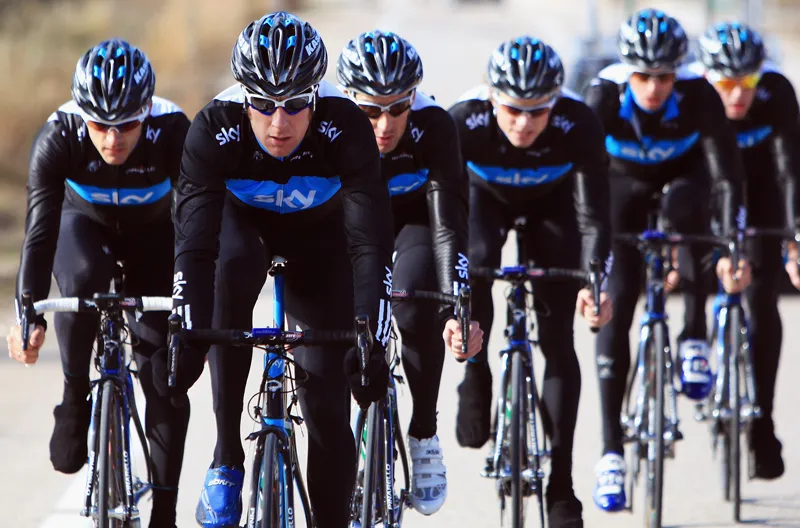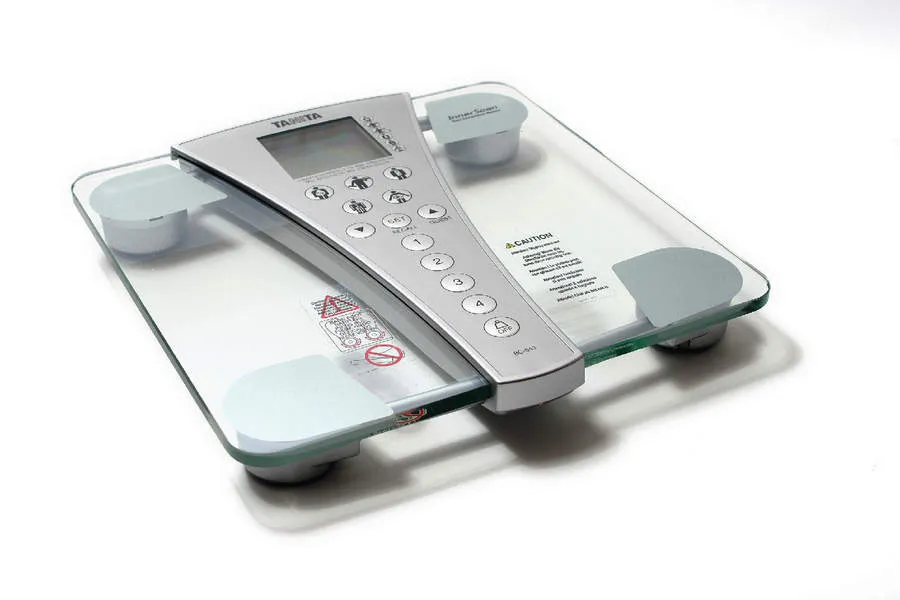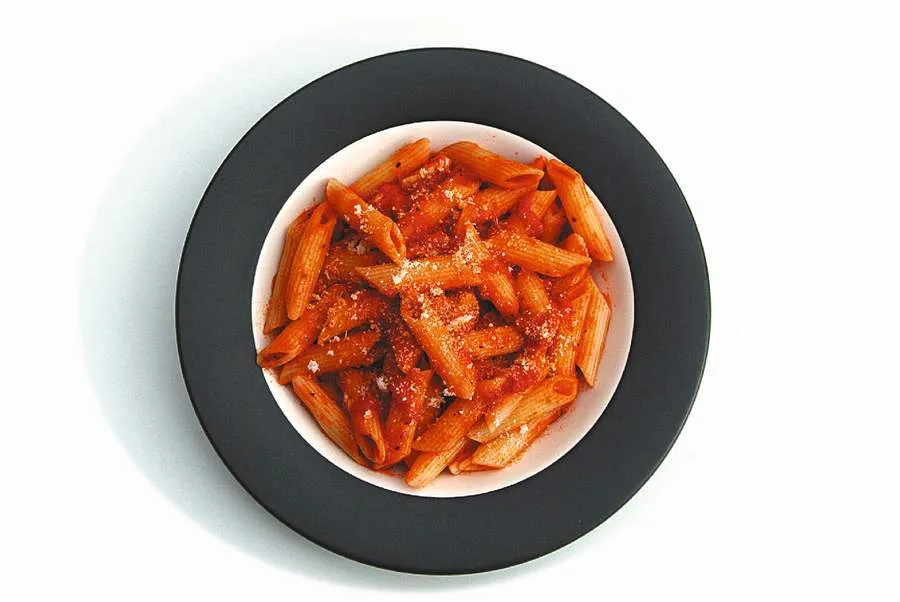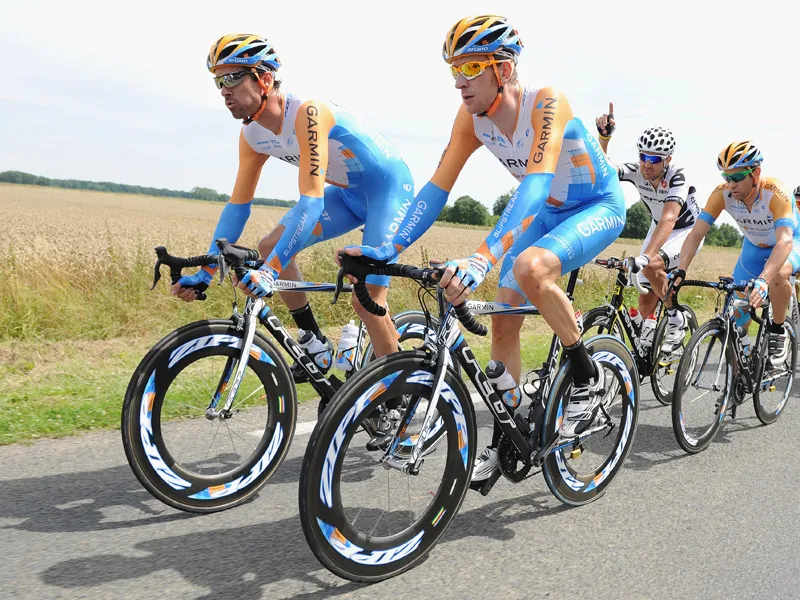When Bradley Wiggins finished fourth in the Tour de France this year he attributed some of his success to having lost weight. Reports suggested he had shed 6kg since he last rode the Tour in 2007, and reduced his body fat percentage to just four percent.
Most Tour de France competitors will go into the race carrying around seven percent; the ‘normal’ values are 15-20 percent for men and 25-30 percent for women.
Wiggins told the London Evening Standard that the weight loss meant he was “carrying the equivalent of six bags of sugar less up a mountain”, adding that 1kg of body weight over a 30-minute climb equals one minute in time.
But while minimising body fat can aid speed for any cyclist, it has to be carried out sensibly and safely.
Losing it
The first step to realistic, performance-enhancing weight loss is gaining an accurate understanding of your body composition. When looking at body composition from a health perspective, it’s important to take into account aspects such as height, waist and Body Mass Index (BMI), which measures weight in relation to height to calculate whether a person is a ‘safe’ weight.
But for an athlete it’s more complex, because such measurements don’t distinguish between lean mass (muscle) and fat mass, making them potentially misleading. Alex Taylor, performance sport manager at the University of Birmingham, says: “An elite cyclist may appear underweight compared to ‘normal values’ [or BMI], whereas a body builder may appear obese. Neither of these conclusions would be true.”
Nigel Mitchell, nutritionist at British Cycling who worked with Bradley Wiggins, adds: “Mineral weight, which includes bone, is relatively constant but fat mass, muscle mass and water mass can change. Bradley wanted to get to as light a weight as possible without compromising performance.” In short, athletes looking to lose weight need to minimise fat but maintain muscle mass (see Measuring Up, below).
After checking your body composition you should only aim to shift any excess weight slowly and steadily. “It’s important that weight loss is modest and is no more than approximately 1lb to 2lb per week,” says Gavin Reynoldson, a teaching fellow at the University of Bath’s Department of Sports Development. “This can be achieved by reducing energy intake by about 500Kcal per day. Any more than that will likely result in impaired performance and loss of muscle mass.”
He adds that it’s important not only to think about daily calorie intake but also the amount of each macronutrient (protein, carbohydrate and fat) consumed. “The body will oxidise more carbohydrate and protein when an excess is consumed," he says. "However, an excess of dietary fat will not immediately increase the rate of oxidation and is more likely to be stored as fat. The amount of carbohydrate that should be consumed will vary depending on the volume of exercise undertaken.”
Reynoldson offers some guidelines to cyclists. For example, for those with a light training programme (less than an hour a day of low intensity exercise) he advises 5-7g of carbohydrates per kg of body mass per day, but for a cyclist undertaking an extreme exercise programme (more than four to five hours of moderate to high intensity cycling such as a stage race), he advises 10-12g of carbohydrate per kg of body mass per day. In real terms, a piece of bread has approximately 20g of carbohydrate, and 50g of dry-weight rice has about 30g of carbohydrate.
“Cyclists should also eat five to six small meals per day and make sure they refuel immediately post-workout by consuming 1g of carbohydrates per kg of body mass," says Reynoldson. "They should also maintain hydration by drinking one litre of water for every 1,000Kcals consumed daily, as well as by consuming fluids during training.”
One litre of fluid is just under two pints and most people who exercise intensely will probably need three litres a day, but this will vary. It’s also important to avoid high fat food and alcohol, which are energy dense and will increase storage of body fat.

Wiggo’s way
For Wiggins, minimising fat meant embarking on a special diet eight months before the Tour de France began, with the focus on quality and not just quantity. “We were looking at high quality carbohydrates, high quality protein and the right fats,” says Mitchell.
High quality protein – or proteins that contain all the essential amino acids in the proportions required by the body – include salmon, chicken, steak, milk and yogurt. High quality carbohydrates include vegetables, wholegrain rice, wholemeal bread and pasta (as opposed to poor quality carbohydrates such as white bread, crisps and biscuits). “We just ensured that we got the right types of essential fat into the body," says Mitchell. "For example, omega 3 fats, found in foods such as oily fish as well as in fish oil supplements.” Snacks for Wiggins included fruit, yoghurt and seed bars.
Mitchell says a typical diet for a professional cyclist would be porridge for breakfast, which gives the athlete good quality carbohydrates and protein, as well as fibre in the oats and minerals in the milk. Snacks consumed while on the bike include Go Bars (produced by Science in Sport, who sponsor British Cycling). These contain two portions of fruit, as well as organic oats and soya protein.
After riding, British Cycling athletes drink the SiS Rego range of recovery drinks, which Mitchell says provide a good balance of protein, carbohydrate, vitamins and minerals. He also recommends eating a snack before bed, such as a bowl of cereal: “This allows cyclists to maintain their protein pool to aid muscle recovery between training days. It’s all about eating little and often.”
Any cyclist looking to lose weight can adapt the principles used by Wiggins to meet their needs, says Mitchell, but it takes dedication. To minimise fat safely without being obsessive about it, Mitchell’s advice is simply to stick to fresh food and avoid processed food, which often has too much salt and sugar. This can make blood sugar levels unstable, which affects energy levels and makes the body crave certain foods.
Losing weight and optimising your cycling performance isn’t rocket science, but it might take a bit of forward planning – and a fair amount of dedication. Just ask Bradley.
Measuring up

Before even thinking about losing weight it’s important to ensure that you’re only losing fat if you need to, and can safely do so. A good starting point is to get an accurate measurement of your body composition, accompanied by some professional advice about how much you should safely aim to lose. Some private gyms offer this service, while a number of universities have labs accredited by the British Association of Sport and Exercise Science (BASES) and will offer fairly inexpensive physiological profiling tailored to your needs.
As Rhys Thatcher, director of learning and teaching in exercise physiology at Aberystwyth University, explains, “We do testing for quite a number of athletes, and we have a big cycling fraternity around here, mountain bikers especially, due to the area. Many come in for fitness tests and body composition tests, and we tailor it to what they need.”
One of the cheapest ways to measure body fat is a method called bioelectrical impedance, which sends an electrical current through the body. “Muscle is 70-75 percent water, but fat stores very little, if any, water,” says Thatcher. “Water conducts electricity so if you send that current through the body you can measure how easily it’s passed through. The software then predicts how much fat and lean tissue you’re carrying.” These machines, which look like scales, can cost less than £100, but Thatcher warns accuracy can vary by between five and six percent of the actual reading.
Athletes will benefit from more in-depth measurements to distinguish between muscle and fat. One of the most common methods is skin-fold measurement. This is fairly accurate but it does depend on the skill of the person taking the measurements. The International Society for the Advancement of Kinanthropometry (ISAK) has developed international standards for this sort of test, and Taylor recommends that it should be carried out by a qualifi ed ISAK practitioner.
“A full anthropometric assessment will include not only eight specific skin-fold measurements but also a range of bone breadths and lengths, and limb girths," he says. "These changes can then be tracked over a period of time so subtle changes in body fat and muscle can be determined.”
Dual energy X-ray absorptiometry (DEXA) is arguably the gold standard. This method uses a scanner to measure muscle, bone and fat based on density. “The basic principle is that bone is denser than muscle, which is in turn more dense than fat,” says Taylor. “More X-rays will be able to pass through muscle than bone, and through fat than muscle. This means an accurate breakdown of body composition can be gathered from a scan and tracked over time.”
Calorie counting

For many of us, going for a long ride is an excuse for a cake fuelled blowout. Quite right too – you’ve burnt plenty of calories and you need to replenish them. It’s a similar story for pro cyclists in races but, like their rides, their fuelling is on a much grander scale. Studies have found that cyclists such as Bradley Wiggins need between 4,000 and 8,000 calories a day while stage racing. Compare that to the recommended 2,550 daily calorie intake for men (8,000 calories equates to 16 Big Macs...).
Obviously Brad and his team-mates don’t eat burgers but they do visit a drive-through of sorts when they grab musettes – feed bags – during a stage. For every hour they need to consume at least 60g of carbohydrate (240 calories).
According to Allen Lim, physiologist at Wiggins’ Garmin-Slipstream team, a typical musette will contain a selection of energy products from team sponsor Clif, such as bars, gels and Shot Bloks, a bottle of energy drink and some homemade rice cakes. These rice cakes, Lim told Procycling magazine, are made with eggs, prosciutto, olive oil, soy sauce, balsamic vinegar and sprinkled with sugar and provide 80 calories, 3g of protein and 2g of fat.
When off the bike, it’s a case of eating a big, big 1,500-2,000 calorie low fat, high carb breakfast; post-ride carb/protein recovery drinks and snacks, and a huge, usually pasta-lean, protein-vegetable, calorie-rich dinner.
Top 10 low-fat, high-energy foods
- Wholewheat pasta
- Wholegrain rice
- Potatoes
- Wholegrain bread
- Fruit
- Vegetables
- Quinoa ('keen-wa')
- Porridge
- Muesli
- Weetabix
Source: Gavin Reynoldson MSc, University of Bath, Department of Sports Development

10 top myths of fat loss
1 Rapid weight loss is good: Rapid weight loss is often due to dehydration followed by loss of functional lean muscle mass that contributes to the largest component of weight lost. This will result in a reduction in performance.
2 Going without breakfast will aid weight loss: Skipping meals will reduce your metabolic rate and lower your glycogen stores (carbohydrate energy in the muscles and liver). It’s important that you feed your muscles regularly to aid performance so that you don’t overeat later in the day and risk excess storage of fat.
3 Reducing carbohydrate considerably will aid weight loss: If carbohydrate stores are low you will fatigue faster and recovery time will increase. You may also risk the loss of muscle as it starts to be broken down as a source of fuel.
4 Avoiding dietary fat completely will assist weight loss: Dietary fat plays an integral role in maintaining optimal function at rest and during physical activity. Reducing the intake of dietary fat too much can hinder performance and, therefore, weight loss.
5 Using sweat bags or saunas will aid weight loss: This will only lead to dehydration, which results in a reduction in performance, further hindering weight loss.
6 Lifting weights will bulk you up and not aid weight loss: Resistance training should form an important part of your fat loss plan to increase energy expenditure and build more muscle. Muscle tissue is very metabolically active and will increase your resting metabolic rate.
7 Fad diets are good: Fad diets often lead to a yo-yo effect of weight loss and weight regain. Restricting certain food groups so severely also means you will lose muscle and lower your metabolic rate, which makes it harder to achieve further fat loss.
8 Eating after 8pm is bad: Fuelling your muscles after exercise is really important. Low glycogen stores lead to poor recovery and reduced performance on subsequent training sessions. This in turn reduces energy expenditure and fat loss.
9 Muscle can be converted to fat: Muscle and fat are two different tissue types. An increase in physical activity will cause an increase in muscle tissue and a decrease in fat tissue.
10 A high consumption of dietary protein will lead to large gains in skeletal muscle: As long as there is adequate protein in the diet, muscle will adapt and hypertrophy (get bigger). A consumption of more than 2g of protein per kg of body weight will not lead to greater gains in muscle mass but may increase fat storage.
Source: Gavin Reynoldson MSc, University of Bath, Department of Sports Development

